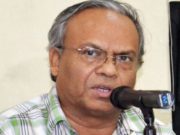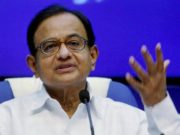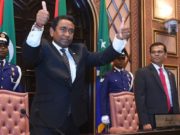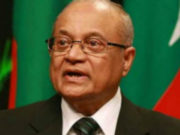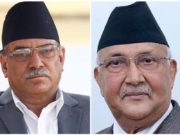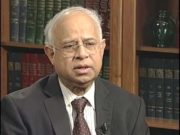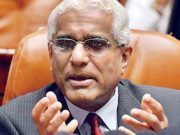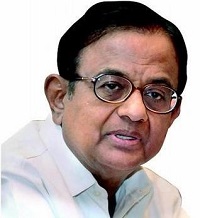(Exclusive) India’s 2017-18 budget has left behind a trail of controversies, even one as basic as its timing.
Many have said the government should have pushed back the date of the budget rather than advance it by a month - to Feb 1- to get a clear picture of the impact of the Nov 8 demonetisation.
Finance Minister Arun Jaitley admitted in his budget speech that the demonetisation was a disruptive reform. There is unanimity over its adverse impact – economists agree that the 2016-17 FY growth rate would not be the projected 7.6 per cent and would drop to anything between 6.5 to 6.75 per cent, amounting to a drop of around 1 per cent.
It may return to above 7 percent in the next fiscal but would remain way below 8 percent that Modi needed to create the millions of jobs he promised during the 2014 parliament poll campaign.
India’s young population may provide a huge demographic dividend to the country’s growth, but only if they are properly utilised and not rendered jobless by some shooting-the-foot move like demonetisation. Such moves creates social unrest and discontent, not sustainable growth.
But pushing back the date of the budget would show the government as acknowledging that demonetization was a mistake – and with several key states going to elections this summer, it was important to offer some sops, specially for those most badly hit by demonetization.
That is what the government has done in this budget. So there is a tax relief for low income tax-payers and smaller companies and double the money for the rural employment scheme MGNREGA to help create some income in rural areas. Prime Minister Modi had railed against the MGNREGA as a useless scheme during his 2014 parliament election campaign – now his government is using it to assuage the rural poor and boost Modi’s pro-poor image that is seen as key to win elections in India.
The Economic Survey preceding the Budget had raised hopes of a decisive resolution of the Non-Performing Loan or NPL issue, the single major problem that adversely impacts the Indian banking and corporate sector. But Jaitley’s budget speech has not a word on the issue. India’s NPL estimates vary between $90 billion to 120 billion .
Some have said before that demonetisation’s real purpose was not to fight black money or create a cashless economy, as Modi have stressed, but to recapitalize the banks whose capital base was denuded by huge non-performing loans without touching the super-rich. Congress leader Rahul Gandhi keeps attacking Modi for ‘doing everything for his 15 corporate friends’ – he points to these crony capitalists, the cause behind the NPL issue. Reserve Bank of India (RBI) statistics show 53 business houses account for almost 70 percent of India’s NPL problem – the bank loans for the Adanis, Modi’s favourite corporate house, is said to exceed the total crop loans taken by Indian farmers.
But demonetization is just an one-time solution for this problem. The government cannot force people indefinitely to not withdraw their money deposited in banks post-demonetisation – once the current restrictions are lifted and depositors start withdrawing, the problem will be back.
Ajay Chhibber, a top public finance analysts says : “ One of the big lessons from international experience is the longer you delay resolving the banking sector’s problems, the longer it takes for the economy to recover.” Jaitley’s latest budget gives no indication that India has learnt that lesson.
The Economic Survey talks of establishing a Public Sector Asset Rehabilitation Company (PARA), where the NPL may be transferred and settled, clearing balance sheets of banks and corporates. But financing the PARA is not clarified. Getting the RBI to transfer securities to this agency is one option but that may further weaken the central bank, after its credibility has nosedived post-demonetisation. It might be a better idea to allow banks and corporates take a hit on their balance sheets. It would at least help correct their future action and allow new private banks to be careful as they expand.
Modi’s much-vaunted ‘today’s pain for tomorrow’s gain’ should apply to errant corporate and public sector banks. But in Jaitley’s budget, more than 100 billion rupees is allocated for these public sector banks through the “Indradhanush” scheme, with not a mention on the “bankruptcy law” that the country desperately needs now. It seems Modi is not punishing those who deserve it.
The one positive thing about Jaitley’s budget is the big hike in infrastructure investments (roads, railways, ports). That may generate some much needed economic activity. But the budget says nothing on the National Infrastructure Investment Fund (NIIF) that was created with some fanfare.
While promising prudent fiscal management, Jaitley raised his 2017-18 federal deficit target to 3.2 percent of GDP to cover his spending promises.
“The fiscal deficit bit does not seem very credible. Jaitley is leaving room to exceed it at a later time. I think people will question the fiscal math over the next few days,” Varun Khandelwal, managing director at the Delhi-based Bullero Capital, told Reuters.
It may end up at 3.5 percent of the GDP ultimately.
The government wants to spend more money but does not seem to be clear how this might impact on India’s ratings. Given the global scenario, any adverse impression could trigger a huge outflow of funds from India.
Analysts may look back on the two fiscals – FY 16-17 and 17-18 – as wasted years in India’s growth story.
In FY 16-17 , the world’s fastest growing developing economy expecting a 7.6 annual GDP growth was hit by an ill-conceived , self-defeating , poorly planned demonetization .
In FY 17-18, as Jaitley’s budget shows, India is clearly involved in a back-to-the-wall recovery effort, extending sops and budgeting for schemes to gain electoral dividend but uncertain about implementing reforms that are desperately needed to structurally strengthen Indian economy. The next budget, perhaps the last one before the 2019 parliament elections, is expected to be populist.
Jaitley bullish projection of India as “an engine of global growth” paled the moment he highlighted risks emanating from the global scenario - United States interest rate hikes, rising oil prices and signs that globalisation was retreating.
Donald Trump’s high pitch on limiting H1B visas surely does not augur well for Indian software companies whose exports are dangerously dependent on the US market as the country’s tea industry once was hugely dependent on the Soviet market and took a hit after it broke up.
Modi’s muscular foreign policy in the neighborhood, with potential to escalate conflicts with neighbors like Pakistan, does not match up to the defence component of Jaitley’s budget - much of the 10 percent increase for the second successive term likely to eaten away by salaries and pensions, leaving little for high ticket acquisitions for the army and air force.
A retired general who sat through the Indian Republic Day parade on 26 January this year pointed to the unusually well kitted contingent from the UAE army, which participated to honor their Crown Prince who was chief guest.
“Our infantry soldiers are a generation behind modern armies in the way they are equipped,” the general said angrily.
Forget about the Indian Air Force that needs at least 12 more fighter squadrons to make up for the ageing and accident prone MiG-21s - something that many more defence budgets will be needed to provide for.
The Indian infantryman serving one of the world’s busiest armies fighting counter-insurgencies all around the country will have little comfort if he can read the fine print of Jaitley’s budget.
For the moment, he will just have to make do with a lot of Modi rhetoric to pump up.
Subir Bhaumik is a former BBC Correspondent and author







